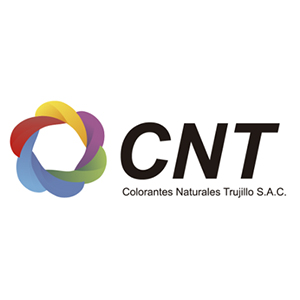sponsored content
Peru aims to lead the world’s natural color market
4 May 2019The sausages, meats, cheeses, jellies and even drinks that you consume often contain colorants that are used to make the product more visually appealing.
Usually you’ll find that the colorants used for this purpose are of synthetic origin, however more and more companies are now seeking to use natural colourants.

Several types of these natural colorants are produced in Peru, for example produce the 95% of the world’s cochineal carmine. The pigment is followed by at least four more natural colorants in the race to position themselves in the food industry. In a market that moves approximately USD $ 2,900 million annually, Peru is looking to become the overall main supplier of natural colorants in the world.
Even as the picture looks promising, its success abroad will depend on a number of factors.
UNSTABLE PRICES
The high concentration of carminic acid in cochineal has allowed Peru to have a privileged place abroad. Proof of this is the growth of exports of this dye, which in 2015 amounted to a total of US $ 76.7 million. However, there is instability in its prices that could scare off some interested industrial sectors.
“Before, carmine was used in the cosmetic sector, but this changed after a big price increase in 1985. From US $ 20 per kilo rose to US $ 130, which drove entrepreneurs away from this sector”, explains Daniel Nakamura, president of the Committee of Extracts and Natural Dyes of ÁDEX.
For Carlos Sarmiento, general manager of Pronex, an exporter of cochineal carmine, the problem has to do with the little stability in the cultivation of the cochineal habitat.
“During 2013 and 2014, many farmers preferred to grow quinoa. Now that the prices have gone up for the cochineal they want to cultivate it again, but there’s delays, “says the executive.
ÁDEX’s solution is to diversify the uses of the production of the prickly pear, with the aim of giving it a culture of constant presence, but to achieve this, the fruit must be made more attractive for the foreign market. Once these crops are stabilized, and with this the prices of cochineal, entrance to other sectors such as cosmetics should become easier.
QUALITY IMPROVEMENT
Although Peruvian cochineal enjoys a quality that has made it unique in the international market, the same can’t be said for other colorants such as achiote and its derivatives. This is because the concentration given by the orange hue is not as consistent as that of achiote from other countries.
“While the seed of our achiote has a concentration of bixin of 3%, that of the Brazilian seed has a 6%, which makes it more demanded,” says Daniel Nakamura.
To overcome this problem, the exporters of natural colorants grouped in ÁDEX have been developing an agreement with the National Institute of Agrarian Innovation (INIA) to obtain financing to improve achiote seed.
“At first, the idea was to import the seed, but the process was very complicated. The objective now is to send our technicians to do an internship at Embrapa (institute similar to INIA). With this knowledge, the next step is the genetic improvement of the seed that would involve an investment of US $ 3 million, “explains Nakamura.
Imbarex plans the planting of seeds brought not only from Brazil but from Africa, in order to improve the quality. “This will allow us to be more competitive,” Bartolomé de las Casas, general manager of the company says.
However, the low quality of the Peruvian achiote also poses other problems, because what is paid per kilo is half of what could be paid prices in the international market. A reality that discourages farmers, who opt for other more profitable crops such as coffee.
Despite these difficulties, Peru is the third largerst supplier of achiote in the world, after Brazil and Africa.
“If we can improve the quality of the seed, the exports of annatto would easily double and we would leave behind our main competitors in Africa, such as Ivory Coast and Kenya,” says Sarmiento.
Out of all the dyes, most Peruvian businessmen bet that this will be the fastest growing in the coming years. Currently, achiote is used to dye foods such as cheeses, margarines and butter.
PROTOCOLS
Another factor to be taken into account is the need to establish food protocols for those inputs that are struggling to gain a place in the international market. One of these is huito, a fruit of the Peruvian jungle that hopes to be included in the international food code this year, which would allow its use as a food additive.
The General Directorate of Environmental Health (Digesa) has been developing a scientific study to demonstrate its safety since 2011. According to Mónica Saavedra, director of Digesa, the entry of this fruit into the food code could take place this year.
This dye can be used in sports drinks, a growing sector in the health industry. Currently, the strongest competitor for huito is spirulina, an extract of seaweed.
GREATER PROMOTION
In order to position these products, Promperú has launched a video advertising the benefits of natural dyes.
“The video was made jointly with ÁDEX and seeks to inform companies and consumers about the origin of natural colorants, which follow all the processes that guarantee the healthiness of the product”, explains Elmer Lava, an official of Prom-Peru, who anticipates that the audiovisual piece will be projected in a series of fairs that are planned for this year.
There is little doubt the trend of consuming natural products is growing worldwide. Last year the giant Kraft announced that it would stop using synthetic dyes, and start using bixin in its cheeses. Other companies that have followed suit are the Danish Hansen and the European Dannon. The future looks promising for this business.

